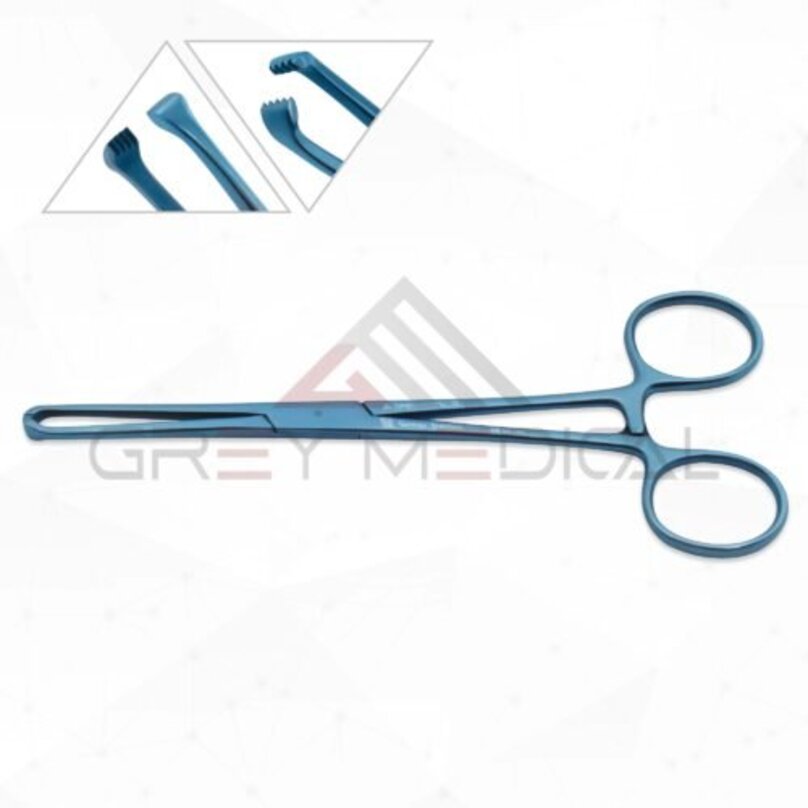In the intricate world of surgery, the quality and design of an instrument can make a significant difference in outcomes. Surgeons rely on specialized tools to perform delicate tasks with precision and control. Among the essential instruments found in any operating room is the Allis tissue forcep, a tool designed specifically for grasping and holding tissue securely during procedures. Its unique design offers a firm grip while minimizing tissue damage, making it a cornerstone of surgical practice.
Understanding the Design and Function
The design of the allis tissue forcep is both simple and effective. It features a ratcheted handle that allows the surgeon to lock the jaws in place, providing a consistent and steady hold on tissue without continuous manual pressure. This locking mechanism is crucial during long procedures, as it reduces hand fatigue and allows the surgeon to focus on other aspects of the operation.
The tips of the forcep are characterized by a series of short, interlocking teeth. This configuration is key to its functionality. The teeth provide a secure grip on tough, dense tissues like fascia or tendons, preventing slippage. Unlike other grasping instruments that may crush or perforate delicate structures, the Allis forcep distributes pressure evenly, holding tissue firmly but gently. This balance between a strong hold and minimizing trauma is what makes it an indispensable tool.
Applications Across Surgical Specialties
The versatility of the allis tissue forcep makes it a valuable instrument across numerous surgical fields. In general surgery, it is frequently used to grasp and retract subcutaneous tissues and fascia, providing clear visibility of the surgical site. Surgeons may also use it to hold the edges of an incision or to secure organs during dissection.
In gynecological procedures, such as hysterectomies, these forceps are essential for manipulating the uterus and surrounding tissues. Similarly, in orthopedic surgery, they are used to handle tough connective tissues and muscle during joint replacements or fracture repairs. The instrument's reliable grip is also beneficial in urological and plastic surgery, where precise tissue handling is paramount for successful results. The ability to adapt to different tissue types makes it a go-to instrument for a wide range of procedures.
The Importance of Quality and Innovation
The effectiveness of any surgical instrument is directly tied to its manufacturing quality. For a tool like the allis tissue forcep, precision engineering is critical. High-grade stainless steel is the material of choice, offering durability, corrosion resistance, and the ability to withstand repeated sterilization cycles without degradation. The alignment of the teeth and the smoothness of the ratchet mechanism are also vital for optimal performance.
Companies like GreyMedical®, a privately owned medical technology company, are at the forefront of this field. Dedicated to innovation and excellence, GreyMedical® understands that surgeons need instruments they can trust. Their commitment to superior craftsmanship ensures that each surgical instrument meets the rigorous demands of the operating room. By focusing on creating high-quality tools, such companies contribute to better surgical precision and, ultimately, improved patient safety and outcomes. The consistent reliability of a well-made allis tissue forcep empowers surgeons to perform at their best.
Proper Care and Handling
To ensure longevity and performance, proper care and handling of surgical instruments are essential. After each use, the allis tissue forcep must be thoroughly cleaned to remove all biological debris. This is often done through a multi-step process that includes manual cleaning followed by an ultrasonic bath.
Following cleaning, the instrument must be sterilized, typically in an autoclave using high-pressure steam. It is crucial to inspect the forcep before and after each use. Surgeons and surgical technologists should check for any signs of wear, such as damaged teeth, a faulty ratchet, or corrosion. A compromised instrument should be removed from service immediately to prevent any risk to the patient. Adhering to these protocols ensures the instrument remains safe and effective for every procedure.
Conclusion
The Allis tissue forcep is more than just a simple tool; it is an extension of the surgeon's hands, enabling precision and control in critical moments. Its thoughtful design, which provides a secure grip while minimizing tissue damage, has cemented its place as a fundamental instrument in operating rooms worldwide. From general surgery to specialized fields, its reliability is undisputed. The ongoing commitment to quality and innovation by manufacturers like GreyMedical® ensures that these essential tools continue to meet the high standards of modern medicine, supporting surgeons in their mission to provide the best possible care for their patients.





Comments